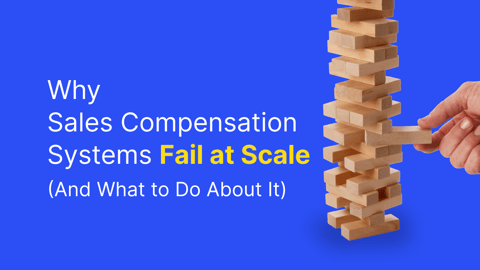Effective, tech-enabled territory management can lift sales by 2-7%. Digital transformation, such as deploying sales planning and compensation management solutions, unlocks much-needed insights and efficiencies into today’s economy, yielding real benefits. Yet, c-level executives face a range of challenges with many problems to address. Competition for capital spending is fierce. As a result, a powerful business case is non-negotiable.
The first step? Your organization needs to align on a set of Key Performance Indicators (KPIs). KPIs are quantifiable measurements of success and performance. Read more about how to choose the right KPIs for your organization here.
But in aligning on KPIs, it’s important to realize, different sets of KPIs apply to different roles. Let’s break down what that can look like.
C-Level Executive
Revenue attainment/profit margin attainment
For C-level executives, the most important measure of sales performance is revenue or profit margin. Most often sales volume is the most important contributor to revenue. Margin is the total profit from a sale.
Why use one over the other? The Sales Management Organization outlines 6 key considerations: sales rep influence on margin, company life stage, type of margin measured, economic climate, how customers are acquired, and quota setting parameters.
Total sales cost of revenue
It compares the cost of sales activity to the organization’s total revenue.
Quota attainment and distribution
The Alexander Group reports that less than 40% of executives are tracking quota distributions. This data contains insights that are important for setting quotas that motivate your salesforce. The Alexander Group advises that a successful quota distribution results in 60% of sellers hitting 100% attainment or above.
Sales Leader
Revenue per seller
Compare this metric to previous periods to highlight growth trends and productivity.
Forecast and pipeline accuracy
This KPI highlights how efficiently your sales organization is running. Intangent outlines 7 key benefits of accurate sales forecasting. Benefits include: boosting target attainment, enabling quick course-correction, improving customer relationships, quantifying organizational health, increasing the quality of sales analysis, feeding continuous strategic planning, and streamlining your financials. Fewer than 25% of sales organizations report having accurate forecasting of 75% or greater.
Voluntary sales turnover
Tracks the number of sellers that leave the organization by their own decision. There are two types of voluntary turnover: functional and dysfunctional. Functional turnover is a voluntary decision made by a low-performing employee. Dysfunctional refers to high-performing, productive associates that leave for greener pastures. Sellers are leaving – stats.
Sale turnover is higher in 2022 than previous years. And the top reasons sales professionals leave include unrealistic sales targets, inadequate tech, and too much admin work.
Net Promoter Score (NPS)
Measures customer loyalty and satisfaction. Customers are asked how likely they are to recommend your product to others on a scale of 0-10. NPS gives insight into potential repeatable revenue and growth.
How is it calculated? Subtract the percentage of detractors (those who score 6 or lower) from the percentage of promoters (those who score 9 or 10). Those who score 7 or 8 are considered passive. Spending time and effort into building your relationship with this group can lead to repeatable revenue.
A sales leader can also benefit from tracking revenue attainment, total sales cost of revenue, quota attainment and distribution, and revenue per seller.
Sales Operations Leaders
Territory performance
“Set it and forget it” doesn’t apply to territory design. Optimizing territories is an ongoing strategic task. Poorly managed territories can waste more than 10% of sales opportunities. This KPI gives insight into where changes need to be made in response to the market.
Sales technology ROI and adoption
Watch this episode of What I Wish I Knew to gain insight into how you can measure and maximize the ROI of your sales tech solution. Rob Blohm from OpenSymmetry discusses why companies have trouble measuring success, and implementation best practices.
A sales operations leader can also benefit from tracking revenue attainment, total sales cost of revenue, quota attainment and distribution and forecast/pipeline accuracy.
Compensation Leader
Compensation cost of sales
Calculate compensation cost of sales (CCOS) by taking the cost of base salaries and variable pay for all sales roles and divide it by sales revenue. According to the Alexander Group, the cross industry CCOS benchmark for B2B companies is 7.9%. It’s one of many factors that determine the competitiveness of your compensation program, and the efficiency of your organization.
Cost of payout errors
Cost of payout errors affects the bottom line, but there is also a morale cost. If a seller isn’t paid what they think it can lead to less productivity, engagement, and turnover.
A sales compensation leader can also benefit from tracking compensation spend versus budget, compensation department infrastructure cost, and quota attainment and distribution.
Plan for Profitable and Predictable Revenue Growth
Once you’ve gained alignment on KPIs, you are on your way to building a solid business case. Now, let’s take a step back.
Why should you consider a sales planning solution? How can it be a tool for gaining predictable and consistent revenue growth? Download this report to learn strategies for growing profitable revenue and how you can make the most of your technology investment.



